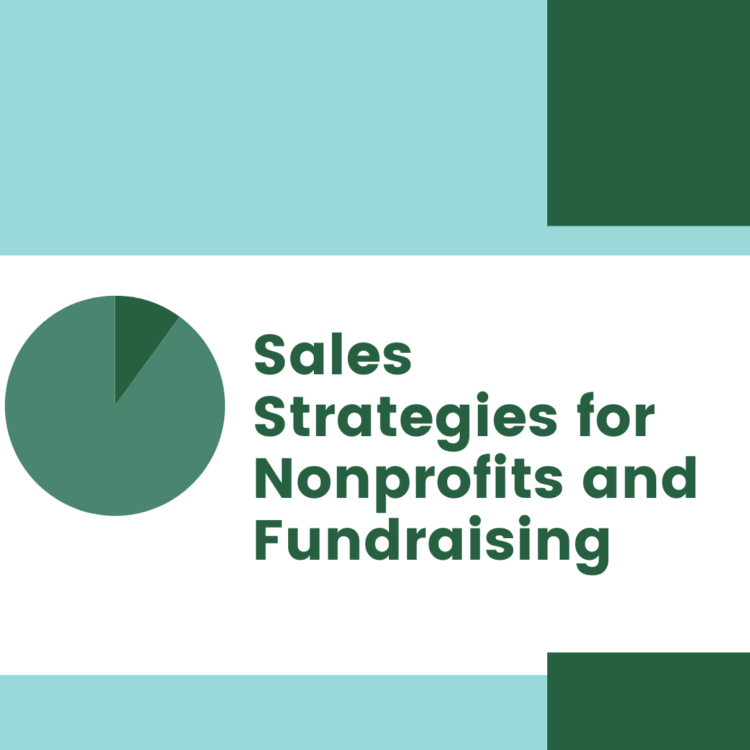In the realm of nonprofits and fundraising, the art of selling takes on a unique form—one centered around inspiring support, building connections, and empowering individuals to contribute to meaningful causes. In this blog post, we’ll explore sales strategies tailored for nonprofits, shedding light on the ways organizations can engage donors, foster relationships, and drive support for their impactful missions.
Crafting a Compelling Narrative: Telling Stories That Resonate:
The heart of any successful nonprofit lies in its story. Craft a compelling narrative that communicates your mission, impact, and the real-world change your organization seeks to achieve. Share stories of individuals or communities positively affected by your work. A powerful narrative creates an emotional connection, making donors feel like active participants in a journey toward positive change.
Building Relationships, Not Transactions: The Power of Donor Engagement:
In the nonprofit world, building lasting relationships with donors is key. Move beyond transactional interactions to focus on meaningful engagement. Regularly communicate with donors, expressing gratitude for their support, and keeping them informed about the progress of your projects. Use personalized communication channels, such as emails, newsletters, and social media, to make donors feel like valued members of your community.
Transparency and Accountability: Instilling Trust in Your Cause:
Transparency is a cornerstone of effective nonprofit sales. Clearly communicate how donated funds will be used and the impact they will have. Provide regular updates on your organization’s financial health, demonstrating accountability and responsibility. When donors trust that their contributions are making a difference, they are more likely to continue supporting your cause.
Segmentation and Personalization: Tailoring Appeals to Donor Interests:
Not all donors are the same, and tailoring your approach to different segments can significantly impact fundraising success. Segment your donor base based on demographics, interests, or giving history. Personalize your fundraising appeals to resonate with each segment, demonstrating that you understand and appreciate the diverse motivations of your donors.
Leveraging Events and Campaigns: Creating Moments of Impact:
Events and campaigns provide powerful platforms for nonprofit fundraising. Whether it’s a virtual event, a crowdfunding campaign, or an annual gala, these initiatives create moments of impact that rally supporters around a shared cause. Develop engaging and shareable content, leverage social media to amplify your message, and encourage donors to participate actively in your events.
Corporate Partnerships and Sponsorships: Amplifying Impact Through Collaboration:
Forge partnerships with corporations that align with your nonprofit’s mission and values. Corporate sponsorships can provide not only financial support but also opportunities for shared marketing initiatives. Collaborate on cause-related marketing campaigns, co-host events, or explore employee engagement programs that benefit both your nonprofit and your corporate partners.
Peer-to-Peer Fundraising: Empowering Supporters to Be Advocates:
Empower your existing supporters to become advocates for your cause through peer-to-peer fundraising. Provide tools and resources that make it easy for individuals to create their own fundraising campaigns on behalf of your organization. This not only expands your reach but also leverages the personal networks and influence of your supporters.
Recognition and Appreciation: Celebrating Your Donors:
Acknowledge and celebrate your donors regularly. Recognize their contributions through public acknowledgment, social media shoutouts, or inclusion in newsletters. Consider creating donor recognition programs that showcase the impact of their support. Feeling appreciated builds a positive donor experience and encourages continued engagement.
Conclusion:
Sales strategies for nonprofits and fundraising are rooted in the principles of connection, impact, and shared purpose. By crafting compelling narratives, building meaningful relationships, ensuring transparency, personalizing appeals, leveraging events, fostering partnerships, empowering advocates, and recognizing donors, nonprofits can create a powerful engine for positive change. As organizations continue to navigate the landscape of fundraising, those that master the art of nonprofit sales will not only secure support for their causes but also inspire lasting impact and societal transformation.










No Comments
Leave Comment